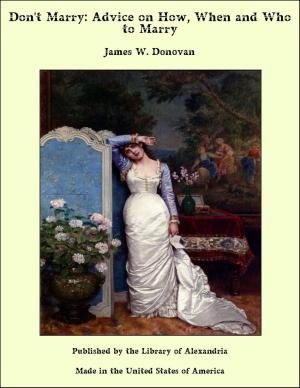| Author: | Henry George Keene | ISBN: | 9781465544124 |
| Publisher: | Library of Alexandria | Publication: | March 8, 2015 |
| Imprint: | Language: | English |
| Author: | Henry George Keene |
| ISBN: | 9781465544124 |
| Publisher: | Library of Alexandria |
| Publication: | March 8, 2015 |
| Imprint: | |
| Language: | English |
The best introduction to this important correspondence of the two great musicians will be found in the following extract from an autobiographical sketch written by Wagner in 1851. It has been frequently quoted, but cannot be quoted too often, describing, as it does, the beginning and the development of a friendship which is unique in the history of art. “Again I was thoroughly disheartened from undertaking any new artistic scheme. Only recently I had had proofs of the impossibility of making my art intelligible to the public, and all this deterred me from beginning new dramatic works. Indeed, I thought everything was at an end with my artistic creativeness. From this state of mental dejection I was raised by a friend. By the most evident and undeniable proofs he made me feel that I was not deserted, but, on the contrary, understood deeply by those even who were otherwise most distant from me; in this way he gave me back my full artistic confidence. “This wonderful friend has been to me Franz Liszt. I must enter a little more deeply into the character of this friendship, which, to many, has seemed paradoxical. “I met Liszt for the first time during my earliest stay in Paris, and at a period when I had renounced the hope, nay, even the wish of a Paris reputation, and, indeed, was in a state of internal revolt against the artistic life I found there. At our meeting Liszt appeared. to me the most perfect contrast to my own being and situation. In this world, to which it had been my desire to fly from my narrow circumstances, Liszt had grown up from his earliest age, so as to be the object of general love and admiration at a time when I was repulsed by general coldness and want of sympathy. In consequence, I looked upon him with suspicion. I had no opportunity of disclosing my being and working to m, and, therefore, the reception I met with on his part was altogether of a superficial kind, as was indeed quite natural in a man to whom every day the most divergent impressions claimed access. My repeated expression of this feeling was afterwards reported to Liszt, just at the time when my “Rienzi” at Dresden attracted general attention. He was surprised to find himself misunderstood with such violence by a man whom he had scarcely known, and whose acquaintance now seemed not without value to him. I am still touched at recollecting the repeated and eager attempts he made to change my opinion of him, even before he knew any of my works. He acted not from any artistic sympathy, but was led by the purely human wish of discontinuing a casual disharmony between himself and another being; perhaps he also felt an infinitely tender misgiving of having really hurt me unconsciously. He who knows the terrible selfishness and insensibility in our social life, and especially in the relations of modern artists to each other, cannot but be struck with wonder, nay, delight, by the treatment I experienced from this extraordinary man
The best introduction to this important correspondence of the two great musicians will be found in the following extract from an autobiographical sketch written by Wagner in 1851. It has been frequently quoted, but cannot be quoted too often, describing, as it does, the beginning and the development of a friendship which is unique in the history of art. “Again I was thoroughly disheartened from undertaking any new artistic scheme. Only recently I had had proofs of the impossibility of making my art intelligible to the public, and all this deterred me from beginning new dramatic works. Indeed, I thought everything was at an end with my artistic creativeness. From this state of mental dejection I was raised by a friend. By the most evident and undeniable proofs he made me feel that I was not deserted, but, on the contrary, understood deeply by those even who were otherwise most distant from me; in this way he gave me back my full artistic confidence. “This wonderful friend has been to me Franz Liszt. I must enter a little more deeply into the character of this friendship, which, to many, has seemed paradoxical. “I met Liszt for the first time during my earliest stay in Paris, and at a period when I had renounced the hope, nay, even the wish of a Paris reputation, and, indeed, was in a state of internal revolt against the artistic life I found there. At our meeting Liszt appeared. to me the most perfect contrast to my own being and situation. In this world, to which it had been my desire to fly from my narrow circumstances, Liszt had grown up from his earliest age, so as to be the object of general love and admiration at a time when I was repulsed by general coldness and want of sympathy. In consequence, I looked upon him with suspicion. I had no opportunity of disclosing my being and working to m, and, therefore, the reception I met with on his part was altogether of a superficial kind, as was indeed quite natural in a man to whom every day the most divergent impressions claimed access. My repeated expression of this feeling was afterwards reported to Liszt, just at the time when my “Rienzi” at Dresden attracted general attention. He was surprised to find himself misunderstood with such violence by a man whom he had scarcely known, and whose acquaintance now seemed not without value to him. I am still touched at recollecting the repeated and eager attempts he made to change my opinion of him, even before he knew any of my works. He acted not from any artistic sympathy, but was led by the purely human wish of discontinuing a casual disharmony between himself and another being; perhaps he also felt an infinitely tender misgiving of having really hurt me unconsciously. He who knows the terrible selfishness and insensibility in our social life, and especially in the relations of modern artists to each other, cannot but be struck with wonder, nay, delight, by the treatment I experienced from this extraordinary man















